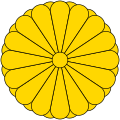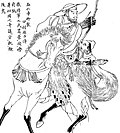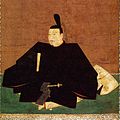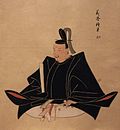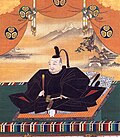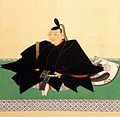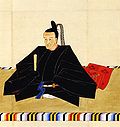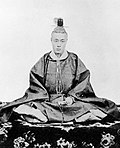Top Qs
Timeline
Chat
Perspective
List of shoguns
From Wikipedia, the free encyclopedia
Remove ads
This article is a list of shoguns that ruled Japan intermittently, as hereditary military dictators,[1] from the beginning of the Asuka period in 709 until the end of the Tokugawa shogunate in 1868.[a]
This article needs additional citations for verification. (January 2024) |
Asuka / Heian periods (709–1184)
Summarize
Perspective
Note: there are different shogun titles. For example, Kose no Maro had the title of Mutsu Chintō Shōgun (陸奥鎮東将軍; lit. "Great General of Subduing Mutsu"). Ki no Kosami had the title of Seitō Taishōgun (征東大将軍; lit. "Commander-in-chief for the pacification of the East") [5] in 789 which is less important than Sei-i Taishōgun. Ōtomo no Otomaro was the first person who was granted the title of Seii Taishōgun (征夷大将軍; lit. "Great appeasing general of the barbarians"). Sakanoue no Tamuramaro was the second, and Minamoto no Yoritomo was third person who had the title of Sei-i Taishōgun.
Remove ads
Kamakura shogunate (1192–1333)
Timeline

Remove ads
Kenmu Restoration (1333–1336)
Ashikaga shogunate (1336–1573)
Timeline

Remove ads
Azuchi–Momoyama period (1568–1600)
The following were military dictators of Japan, de facto shoguns[citation needed] from 1568 to 1598. They unified the country, which at the start were a chaotic patchwork of warring clans.
From 1598 to 1600, the de facto shogunate was delegated to the Council of Five Elders.
Remove ads
Tokugawa shogunate (1600–1868)
Timeline

Remove ads
Notes
- The Tokugawa shogunate came to its official end on 9 November 1867, when Tokugawa Yoshinobu "put his prerogatives at the Emperor's disposal" and resigned 10 days later.[2] This was effectively the "restoration" (Taisei Hōkan) of imperial rule – although Yoshinobu still had significant influence and it was not until 3 January 1868, with the Emperor's edict, that the Meiji Restoration fully occurred.[3] On that day, the Emperor stripped Yoshinobu of all power and made a formal declaration of the restoration of his power.[4]
Remove ads
See also
References
Bibliography
Wikiwand - on
Seamless Wikipedia browsing. On steroids.
Remove ads

